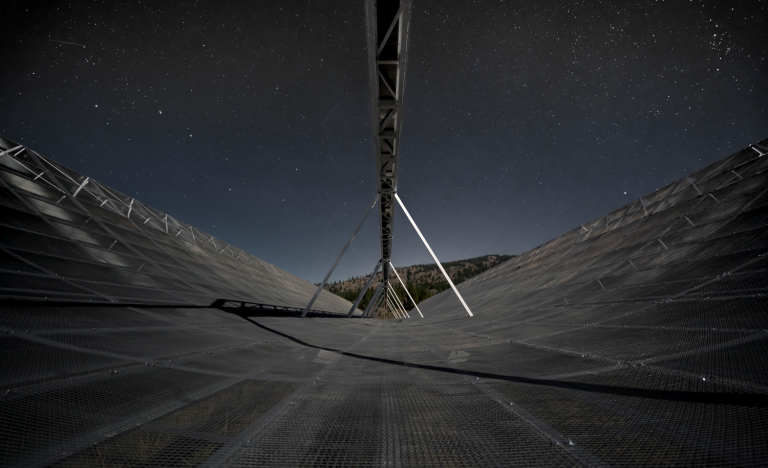The powerful signal came from about 1.5 billion light-years away, at least twice as close as the first detected repeating burst.
The news: A repeating fast radio burst (FRB) has been detected by the Canadian Hydrogen Intensity Mapping Experiment (CHIME), a new radio telescope. As they reported in two papers in Nature yesterday, researchers detected 13 radio bursts, six of which came from the same location. This is only the second time a repeating burst has been recorded.
How CHIME works: Using a series of four semicircular dishes, the telescope stays pointed consistently in the same direction, waiting to pick up signals. While it was waiting to come fully online, it picked up these 13 FRBs.
Some background: The first repeating burst was discovered back in 2007 by looking through data recorded six years before that. It prompted a lot of speculation, but much of it was difficult to verify without more data. The bursts are notoriously hard to catch and measure because of their millisecond length.
What made them? Researchers aren’t sure but believe they come from powerful astrophysical events far from Earth. They’re hoping this new data will help them figure out more details about what created them. By finding bursts coming from the same location, CHIME gives the team more data to home in on their origin as well.

